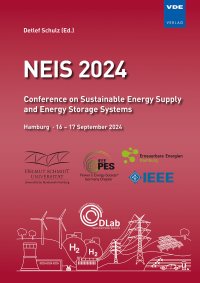Enhanced method to specify location and size of reactive power sources in electrical transmission systems
Conference: NEIS 2024 - Conference on Sustainable Energy Supply and Energy Storage Systems
09/16/2024 - 09/17/2024 at Hamburg, Germany
doi:10.30420/566464014
Proceedings: NEIS 2024
Pages: 7Language: englishTyp: PDF
Authors:
Sager, Bader; Vennegeerts, Hendrik
Abstract:
In practice, particularly during the reactive power planning phase of electrical transmission networks, the acquisition of an AC power flow solution, which is necessary for subsequent determinations and optimizations, can often prove challenging. Furthermore, it is often difficult to discern between unsolvable cases and divergent iterations. Furthermore, the stochastic nature of renewable energy sources (RES) affects equipment utilization and, consequently, reactive power needs. In addition to the conventional stationary security of the network, which considers contingencies, the issue of stability becomes increasingly significant as line loadings increase, for instance, due to the use of high-temperature conductors or curative operation. Of particular interest is the static voltage stability, which should be expressed in a straight-forward and interpretable quantity, such as the distance between the system operating point and the collapse point. Accordingly, this paper presents a reactive power planning approach for the simultaneous placement of reactive power flow controlling technologies, including generator voltages set values, on-load-tap-changer positions of transformers, and shunt reactive power sources, both dynamic (e.g., a static synchronous compensator (STATCOM)) and static (e.g., a capacitor and/or an inductor). The approach is formulated as an optimization problem, which includes the type, location, and size of the sources, as well as their associated costs. The efficacy of the developed method is demonstrated by exemplary results based on synthetic transmission networks that closely resemble reality and are of a realistic scale. These results illustrate the method's capacity to account for reactive power requirements for stationary voltage control, fast controllable reactive power sources to address ordinary and exceptional contingencies, dynamic reactive power reserves, and a minimum distance to the collapse point regarding additional transmission capabilities. Furthermore, the issue of non-converging power flows due to a lack of reactive power is addressed by an innovative formulation of the power flow problem to be solved during the iterations of the heuristic optimization method. This formulation is based on the Mean Variance Mapping Optimization (MVMO) tool, which is used to solve the optimization problem. The specified location, type, and size of compensation devices could also be used during the system restoration process.


